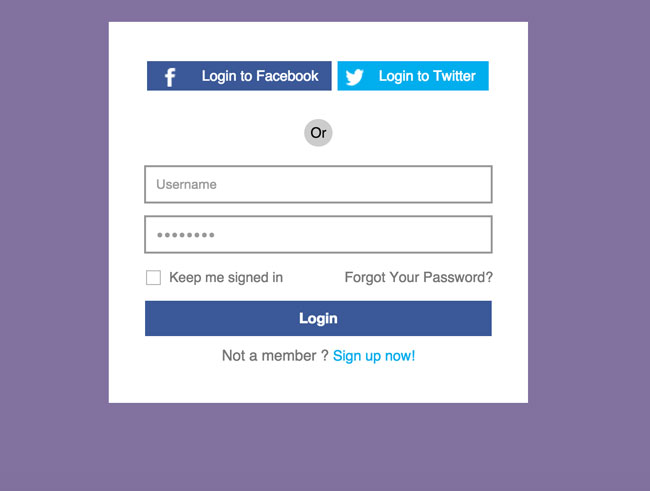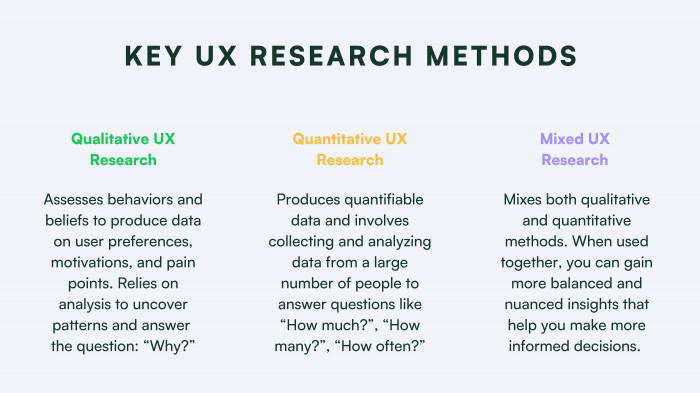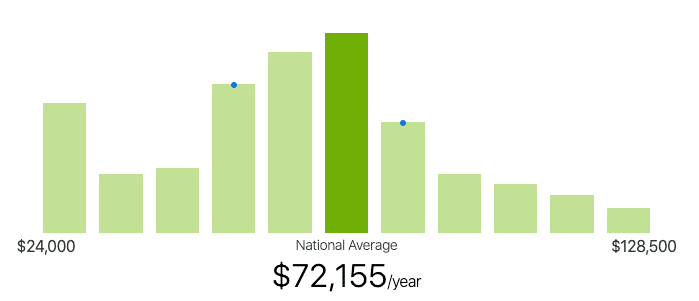
Interaction design can be a powerful tool to make sure your system offers a pleasant user experience. Because it is focused on how users interact with your product or service, this is called interaction design. An example interaction might be to press a button, drag over an interface, or both.
Interaction design refers to creating a prototype for an interface that will help the designer decide the best way to interact with a user. In order to achieve this, the designer should have a clear understanding of the user's needs and their goals. Designers must communicate effectively with stakeholders.

An interaction designer must also be able to use various tools and techniques to create a user-friendly interface. For example, he or she can sketch on a dry erase board or create an online mockup. A prototype can be anything from a whiteboard to a PowerPoint presentation. Some designers even use web applications. The best way to combine both is the best.
Interaction design can be done alone or in conjunction with other designers. While some interaction designers can work alone, many teams rely on core methods. These core methodologies include cognitive psychology, usability, and the poka-yoke principle. They must also consider the hardware and software that will be used to create the interface.
A user may think that an interaction is simple, but the developer might find it challenging. Interaction design must be based on user behavior, technology and the needs of the target audience. If the project is complex, the developer should implement a strategy to streamline the process.
Prototyping is often the most efficient and simple way to accomplish this. A prototyping tool offers many benefits. It allows you to visualize the flow and review the logic. You can also see the visual representations and get feedback on what is working and what doesn’t. Balsaq Mockups (an Adobe Air app) is used for this purpose. A visual representation of the interaction allows the designer to simplify and remove unneeded elements.

Another way is to make a simple prototype and receive feedback from your target audience. These prototypes can be either paper or online mockups. Or, you could make an improvised mockup. Even a simple prototype can make a significant contribution to the development of an interactive product.
When designing interactive products, one of the most important points to remember is that users should be able to complete the desired action in a reasonable time. To do this, the designer must be familiar with the Principle of Lowest Energy. This states that if a user is required to exert the least effort to accomplish a given action, they will perform it.
Several organizations have established design systems to ensure that all their members have a clear idea of how to create a successful product. Open source component libraries are available to ensure consistency in interaction design.
FAQ
Can I use a template or framework on my website?
Yes! When creating websites, many people use pre-built templates. These templates provide all the code necessary to display information on your site.
Some of the most well-known templates are:
WordPress - The most popular CMS
Joomla - Joomla is another popular open-source CMS
Drupal - An enterprise-level solution for large companies
Expression Engine - Yahoo's proprietary CMS
Each platform offers hundreds of templates. Finding the right template should be simple.
Can I use HTML & CCS to build my website?
Yes, you can! Basic knowledge of web design and programming languages such as HTML (Hyper Text Markup Language), and CSS (Cascading Stil Sheets) is required. These languages enable you to create websites that are accessible to anyone with an internet connection.
What is a static website?
Static websites are those where all content is stored on a web server and can be accessed by users via their web browsers.
The term "static", refers to the absence or modification of images, video, animations, and so forth.
This site was initially designed for corporate intranets, but it has been adopted by individuals or small businesses who desire simple websites that don't require complex programming.
Because static websites require less maintenance, they have grown in popularity. Static sites are easier to maintain and update than fully-featured websites with multiple components (such as blogs).
They load also faster than their dynamic counterparts. They are ideal for mobile users and those with slow Internet connections.
Additionally, static websites are safer than dynamic sites. Static websites are much harder to hack than dynamic ones. Hackers can only access the data contained in a database.
There are two main ways to create a static website:
-
Utilizing a Content Management System.
-
Static HTML Website Creation
It depends on what your needs are. A CMS is the best choice for anyone who is new to building websites.
Why? Because you have complete control over your website. A CMS eliminates the need for a professional to set up your site. Upload files to the website server.
You can still learn code and create static sites. It will take some time to learn to program.
How do you design a website?
The first step is to understand what you want your site to do for your customers. What are your customers looking for?
What problems might they have if they don't find what they're looking for on your site?
After you have this information, you need to find out how to solve the problem. You also need to make sure that everything on your site looks right. It should be simple to navigate and use.
Your website should be well-designed. You should ensure that your site loads quickly. If it takes too long, people may not be able to stay as long. They'll go somewhere else instead.
If you want to create an eCommerce site, think about where all of your products are located. Are they in one place? Or are they scattered around your site?
It is important to decide whether you will sell only one product or multiple products at once. Are you looking for a single product to sell or multiple products?
Once you have answered these questions, you can begin building your site.
Now, it's time to take care of the technical aspects. How will your website work? Will it run fast enough? Is it possible to access the information quickly using a computer?
Will people be able to buy something without having to pay extra? Is it necessary for them to register before they are able to purchase anything?
These are vital questions you need to ask. These questions will help you to make the right decisions and move forward.
Is it more likely to be hired as a web developer if I have a good portfolio?
Yes. It is important to have a portfolio when applying for web design or development jobs. Your portfolio should show examples of your skills, experience, and knowledge.
A portfolio usually consists of samples of your past projects. These can be anything that shows off your skill set. Your portfolio should include everything from mockups, wireframes, logos, brochures, websites, and even apps.
What Kinds Of Websites Should I Make?
This question is dependent on your goals. You may choose to sell products online if you want to build a website. To make this happen, you'll need a reliable eCommerce website.
Blogs, portfolios, forums, and other types of websites are also popular. Each of these requires different skills and tools. You will need to be familiar with blogging platforms like Blogger or WordPress if you wish to create a blog.
You must decide how to personalize your site's appearance when choosing a platform. There are lots of free themes and templates available for each platform.
After you have chosen a platform, it is time to add content. Pages can include images, videos, text and links.
When you are ready to launch your new website, you can publish it online. Once published, visitors can view your site in their browsers.
Statistics
- When choosing your website color scheme, a general rule is to limit yourself to three shades: one primary color (60% of the mix), one secondary color (30%), and one accent color (10%). (wix.com)
- In fact, according to Color Matters, a signature color can boost brand recognition by 80%. There's a lot of psychology behind people's perception of color, so it's important to understand how it's used with your industry. (websitebuilderexpert.com)
- It's estimated that chatbots could reduce this by 30%. Gone are the days when chatbots were mere gimmicks – now, they're becoming ever more essential to customer-facing services. (websitebuilderexpert.com)
- Did you know videos can boost organic search traffic to your website by 157%? (wix.com)
- It's estimated that in 2022, over 2.14 billion people will purchase goods and services online. (wix.com)
External Links
How To
How do I get started in UI Design?
There are two routes to becoming a UI Designer:
-
You can get a degree from school in UI Design.
-
You can start freelance.
If you want to go through school, you'll need to attend college or university and complete four years of study. This covers art, business, psychology, and computer science.
You can also attend classes at state universities and community colleges. Some schools offer tuition-free programs while others charge tuition.
You will need to find work after graduation. If you are going to be working for yourself, you will need to build your client list. You should network with other professionals to let them know that you exist.
There are many opportunities to intern for companies that specialize on developing web applications. Many companies hire interns before they hire full-time staff.
You will find more jobs if you have a portfolio that showcases your work. Your work samples, as well details of the projects, should all be part of your portfolio.
It is a good idea for potential employers to receive your portfolio via email.
Freelancers need to promote themselves. You can list your services on job boards such Assure, Guru, Freelance, Guru and Upwork.
Freelancers often receive assignments from recruiters who post openings online. These recruiters seek qualified candidates to fill open positions within certain industries.
These recruiters provide candidates with a project description that details the position's requirements.
Freelancers are not required by law to sign any long-term agreements. However, if you plan to move forward, it is best to negotiate an upfront payment.
Many designers prefer to work directly and not through agencies. This may sound ideal but many people lack the skills.
Agency workers have a deep understanding of the industry in which they are working. They have access to resources and training that enable them to produce high quality work.
Aside from these benefits, agency workers are often paid a higher hourly pay.
You won't be able to get in touch with your employer directly if you work with an agency.
To succeed as a UI designer, you must be self-motivated, creative, organized, flexible, detail-oriented, analytical, and communicative.
Also, you must have excellent communication skills both verbally and in writing.
UI designers are responsible to design websites using user interfaces (UI) as well as visual elements.
They also ensure that the site meets users' needs.
This requires understanding what information visitors want and how the website should function.
To create wireframes, UI designers can use a variety of tools. Wireframing helps them visualize the layout of a page before beginning their designs.
Online wireframe templates make it simple to create your own wireframes.
Some designers focus solely on UI design, while others combine UI design with graphic design.
Graphic designers use software such as Photoshop to edit images.
Adobe InDesign is used to create layouts and pages.
Photographers capture images using digital cameras or DSLRs.
The photos are then uploaded to a photo editing software where text captions, filters and other effects can be added.
After taking the photo, the photographer saves it in a file format that is compatible with the website.
It is crucial to consider all aspects when designing a website.
This includes research and planning, wireframing, prototyping testing, coding, content creation and publishing.
Research – It is essential to do extensive research before you begin a new project.
Planning - Once your research is complete, you can begin to create a plan.
Wireframing: A wireframe is a sketch of a website or application.
Prototyping: Prototypes can help to ensure that the final product meets the initial vision.
Testing - Multiple rounds of testing should be done on the prototype to make sure it works properly.
Coding: Coding is the process of writing code for computers.
Content Creation: Content creation can include everything from copywriting to managing social media profiles.
Publishing is the act of uploading files and making sure that the site can be accessed.
You will learn about various projects as a freelance UX/UI designer.
One example is that some companies only need wire frames, while others need complete prototypes.
You might be required to do certain tasks, depending on what type of project it is.
If you are hired to create wireframes for a company, you may be expected to produce several wireframes each time.
You may need to develop a functional version of the site if you are hired to build a prototype.
Regardless of the type of project, it's important to have strong interpersonal skills.
Referrals are what most clients use to hire freelancers. Therefore, it is important that you establish strong relationships with potential employers.
You must also be able communicate clearly both verbally as well as in writing.
A portfolio is an important part of any freelancer's arsenal.
It displays your work and shows your ability to produce high-quality results.
You can do it online with a professional portfolio.
It is a good idea to look for websites that are similar to yours to get you started.
You can then search these websites to find out which one offers its services.
Once you have determined the best practices for you, you can begin to adopt them.
You can also include links to your portfolio in your resume.